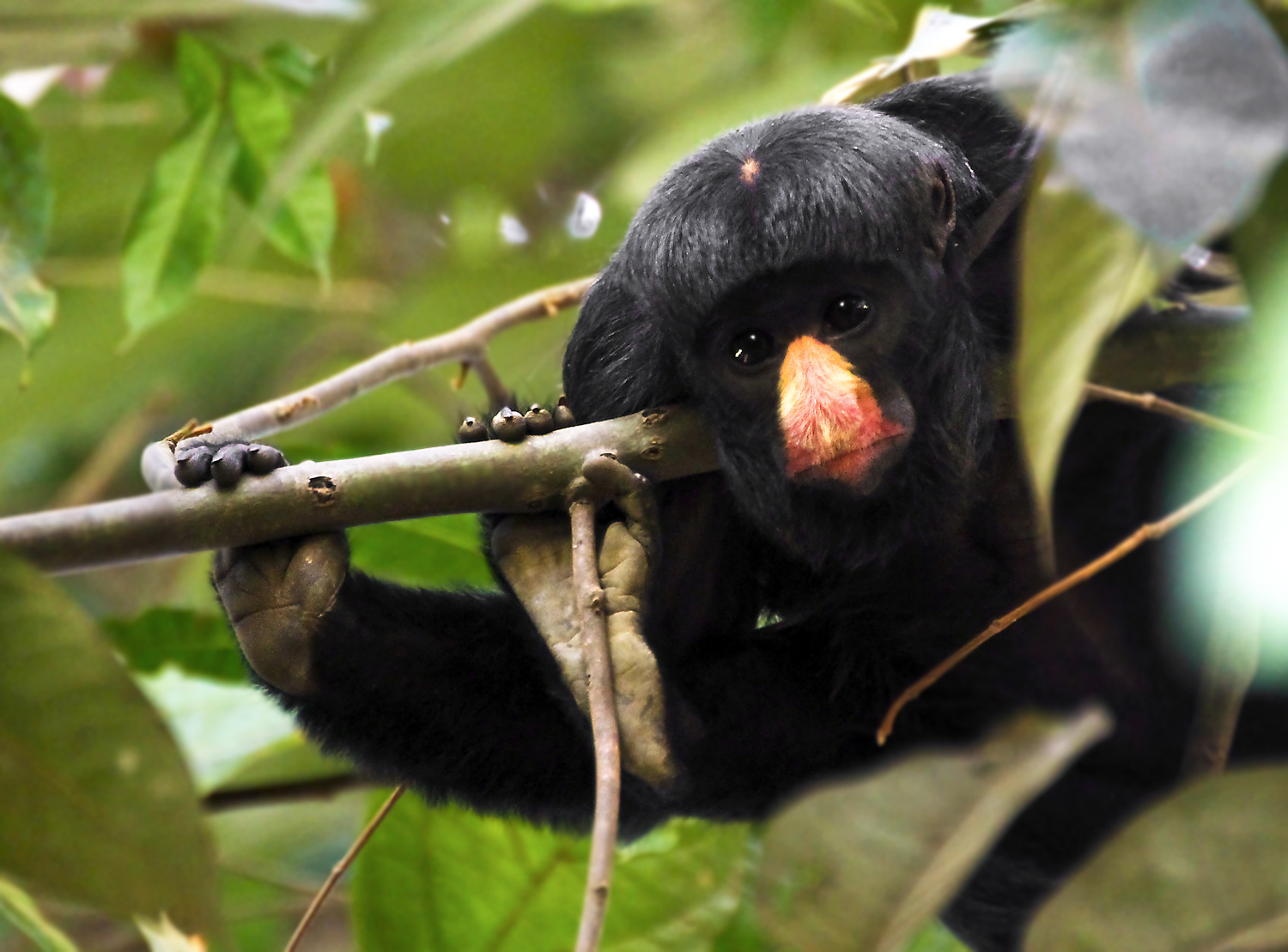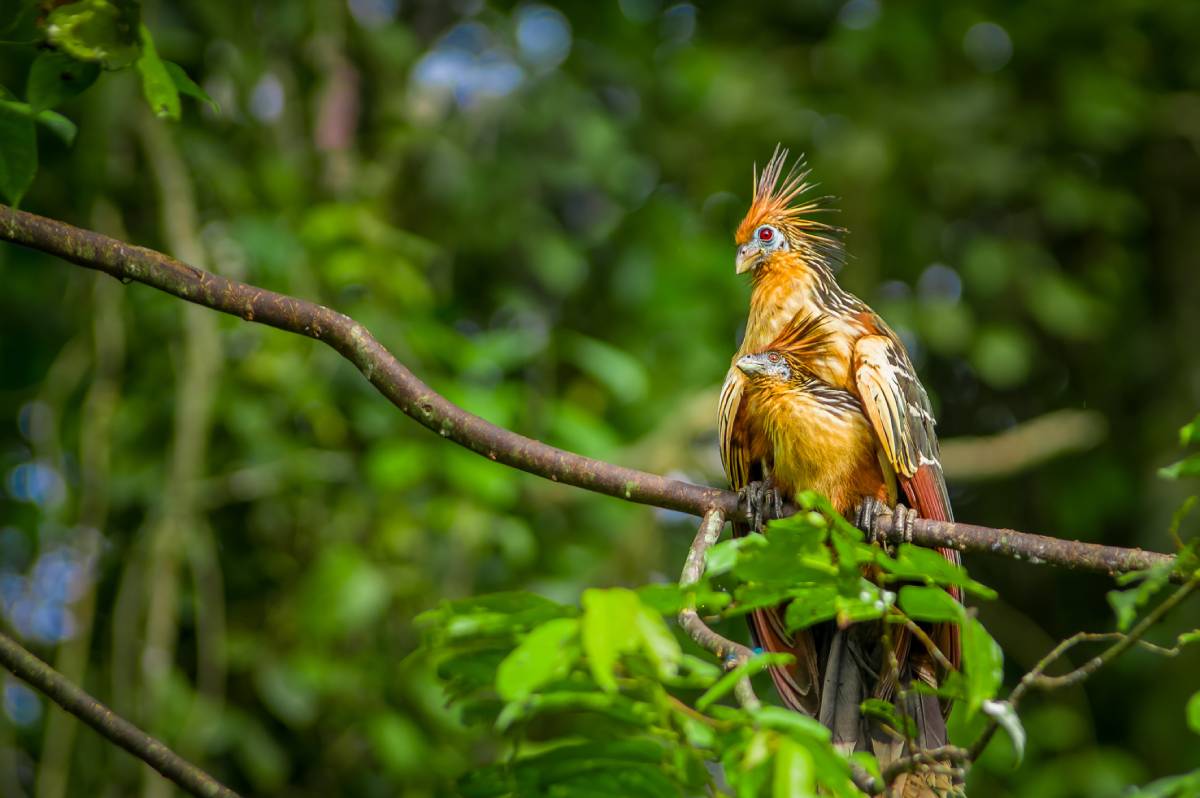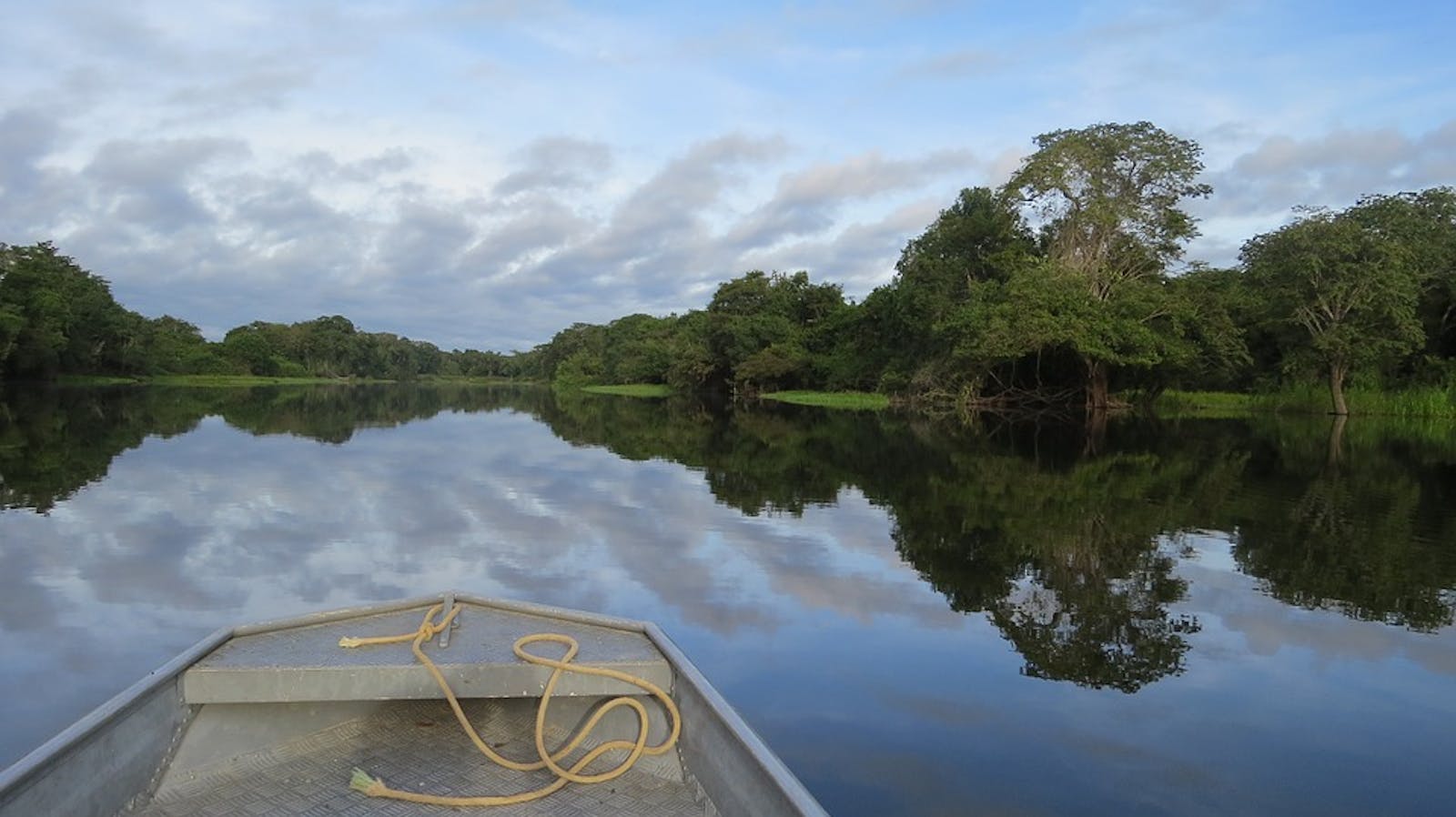Madeira-Tapajós Moist Forests
The ecoregion’s land area is provided in units of 1,000 hectares. The conservation target is the Global Safety Net (GSN1) area for the given ecoregion. The protection level indicates the percentage of the GSN goal that is currently protected on a scale of 0-10. N/A means data is not available at this time.
Bioregion: Southern Amazonian Forests (NT17)
Realm: Southern America
Ecoregion Size (1000 ha):
72,126
Ecoregion ID:
476
Conservation Target:
78%
Protection Level:
6
States: Brazil, Bolivia
The white-nosed saki is an endangered New World primate (a bearded saki) endemic to the Madeira-Tapajós moist forest ecoregion. Their populations occur in low density and requires large areas of continuous forest with high fruit productivity. Saki monkeys are unique both in their appearance—a striking white face in contrast to their black bodies—and in their behavior. This species is a specialized seed predator and is almost entirely frugivorous.
Young individuals must learn from their parents where to go in the forest to follow the fruiting cycles of their favourite trees. Because there are so many different species of trees in the Amazon, and only a few may be fruiting any one time, they must patrol large areas to forage in order to survive.

The flagship species of the Madeira-Tapajós Moist Forests ecoregion is the white-nosed saki. Image credit: Valdir Hosbus, Creative Commons
The ecoregion lies in central Amazonia, including a considerable expanse of land area between the Madeira and Tapajós Rivers (both major tributaries to the Amazon). This is a large and diverse ecoregion; the landscapes, rainfall, seasonality, and temperatures vary. There are large areas of white-sand grasslands on the upper Madeira and Tapajós Rivers. Along the Madeira River, seasonally flooded forest occurs. The floodwaters of this whitewater river carry suspended solids, depositing nutrient-rich sediments on the forest floor.
The southern portion of the region includes a steep-sided flat-topped mountainous region with elevations to 1,200 masl (meters above sea level, elevation). The northern portion, is on the low plain of the Amazon Basin. Annual precipitation in the northern and southern portions of the region is below 2,000 mm, whereas a section of the Middle Madeira River receives as much as 4000 mm. Annual temperature ranges from 23°C in the mountains to 27°C in the humid lowland areas.
The dense lowland rain forest has a high 30 m canopy with some emergent trees as high as 45 m. This is the western limit of the widespread, tall emergent tree Dinizia excelsa, and the eastern limit for naturally occurring cacao. The rare local endemic tree Polygonanthus amazonicus was once found near Maués. A characteristic showy tree of this region is the purple-flowered tulipwood, a hardwood timber tree popular for making furniture.
The ecoregion holds 183 mammal species, including 90 species of bat and approximately 621 bird species. The Tapajós River acts as a barrier to the distribution of animals, plants, and insects. The white-fronted capuchin and white-fronted saki (Pithecia hirsutus) occur on the west side of the river, while the white-nosed saki only occurs on the east. The patch of land between the Madeira and Tapajós has high primate diversity and is home to several endemic species, such as the Amazon black howler and the white marmoset. This region is the eastern limit of the brown woolly monkey. The Santarem marmoset is endemic to the northern part of this ecoregion while the bare eared squirrel monkey and the dusky titi are endemic to the south.

Goatsin Opisthocomus hoazin on a tree.
Birds of interest include species of tinamou, macaw, parrot, parakeet, and the hoatzin. River wildlife includes the Amazonian manatee, river dolphins, black caiman, and yellow-spotted sideneck turtles. There are three endemic species of lizard as well.
This region hosts one of the most degraded sectors of central Amazonia. Located in central Rondônia where human settlement and subsequent deforestation has left over one-third of the landscape of this state denuded and degraded. Most of this occurs along the Humaitá-Cuiabá road, but land degradation has occurred along the Trans-Amazon Highway as well.
The protected area system is not well implemented. The core of this system is the Amazonia National, that straddles the Tapajós River near Itaituba, covering 9,935 km2, but suffers from inadequate administrative capacity, and Pacaás Novos National Park that protects 7648 km2 of montane and submontane area. Additional important areas are Humaitá National Forest (4,687 km2), Jarú Biological Reserve (2,682 km2), and Guaporé Biological Reserve (6,000 km2).
Rapid expansion of development patterns along roads and riverways with increasing settlement poses the greatest threat to the environment. Timber extraction has degraded many of the forests near the Madeira River and the highways. Expansion of soybean plantations in savannas near Humaitá is altering this ecosystem. Gold mining on the Tapajós, especially near the city of Itaituba, continues to threaten aquatic life and destroy landscape elements along the rivers.
The priority conservation actions for the next decade will be to: 1) create connectivity corridors for wildlife to move between forest fragments; 2) develop schemes for payment for ecosystem services to the timber industry coupled with increased regulation; and 3) strengthen regulation in mining industries to control impacts and ensure reclamation processes.
Citations
1. Sears, R. 2018. Central Amazonia in Brazil and parts of Bolivia. https://www.worldwildlife.org/ecoregions/nt0135 Accessed June 29, 2018.
2. Veiga, L.M., Pinto, L.P., Ferrari, S.F., Rylands, A.B., Mittermeier, R.A. & Boubli, J.-P. 2008.Chiropotes albinasus. The IUCN Red List of Threatened Species 2008: e.T4685A11085894. http://dx.doi.org/10.2305/IUCN.UK.2008.RLTS.T4685A11085894.en. Accessed July 25, 2018
3. Ducke, A., and G. A. Black. 1953. Phytogeographical notes on the Brazilian Amazon. Anais da Academia Brasileira de Ciências 25: 1-46.



